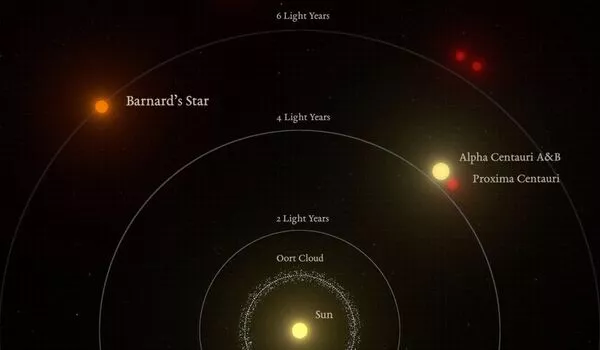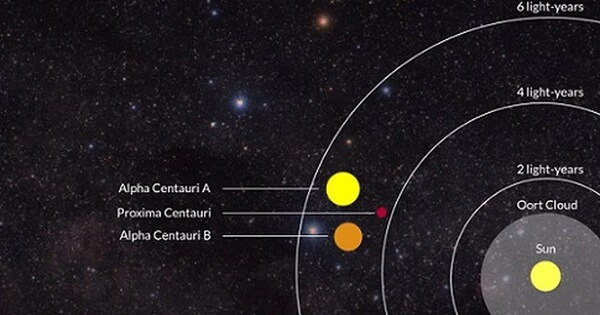NASA will have discovered 5,000 verified exoplanets (alien worlds beyond our solar system) by 2022. These include a wide range of distant planets, such as (perhaps rocky) super-Earths, gas giants such as Jupiter, “ice giants” such as Neptune, and others. Although many of these strange worlds have been found by planetary scientists, it is estimated that there are over a trillion exoplanets in our Milky Way galaxy alone.
A team of scientists using the European Southern Observatory’s Very Large Telescope (ESO’s VLT) in Chile discovered evidence of another planet around Proxima Centauri, our Solar System’s nearest star. This candidate planet is the third found in the system and the lightest to orbit this star. At just a quarter of Earth’s mass, the planet is also one of the lightest exoplanets ever found.
“The discovery shows that our nearest stellar neighbor appears to be packed with interesting new worlds, within reach of further study and future exploration,” says Joo Faria, a researcher at the Instituto de Astrofsica e Ciências do Espaço in Portugal and lead author of the study published today in Astronomy & Astrophysics. Proxima Centauri is the nearest star to the Sun, located slightly over four light-years away.
The discovery shows that our nearest stellar neighbor appears to be packed with interesting new worlds, within reach of further study and future exploration.
Joo Faria
The newly discovered planet, called Proxima d, orbits Proxima Centauri at a distance of around four million kilometers, less than a tenth of Mercury’s distance from the Sun. It orbits between the star and the habitable zone — the area around a star where liquid water can exist at the surface of a planet — and takes just five days to complete one orbit around Proxima Centauri.
The star is already known to host two other planets: Proxima b, a planet with a mass comparable to that of Earth that orbits the star every 11 days and is within the habitable zone, and candidate Proxima c, which is on a longer five-year orbit around the star.
Proxima b was discovered a few years ago with the HARPS instrument on ESO’s 3.6-metre telescope. The discovery was confirmed in 2020 when astronomers observed the Proxima system with a new, more precise equipment on ESO’s VLT, the Echelle SPectrograph for Rocky Exoplanets and Stable Spectroscopic Observations (ESPRESSO). During these more recent VLT scans, astronomers detected the first clues of a signal belonging to a five-day orbiting object. Because the signal was so weak, the researchers had to make more observations with ESPRESSO to prove that it was caused by a planet and not merely by changes in the star itself.

“After obtaining new observations, we were able to confirm this signal as a new planet candidate,” Faria says. “I was excited by the challenge of detecting such a small signal and, by doing so, discovering an exoplanet so close to Earth.”
Proxima d is the lightest exoplanet yet measured using the radial velocity approach, outweighing a planet newly identified in the L 98-59 planetary system. The method works by detecting tiny wobbles in the velocity of a star caused by the gravitational pull of an orbiting planet. The effect of Proxima d’s gravity is so minor that it only causes Proxima Centauri to shift back and forth at a rate of about 40 centimeters per second (1.44 kilometers per hour).
“This is a huge accomplishment,” says Pedro Figueira, ESPRESSO instrument scientist at ESO in Chile. “It shows that the radial velocity technique has the potential to unveil a population of light planets, like our own, that are expected to be the most abundant in our galaxy and that can potentially host life as we know it.”
“This result certainly demonstrates what ESPRESSO is capable of, and it makes me wonder what it will be capable of finding in the future,” Faria says.
The ESPRESSO mission will be supplemented by ESO’s Extremely Large Telescope (ELT), which is now under construction in the Atacama Desert and will be critical in discovering and analyzing many more planets around neighboring stars.





